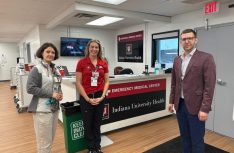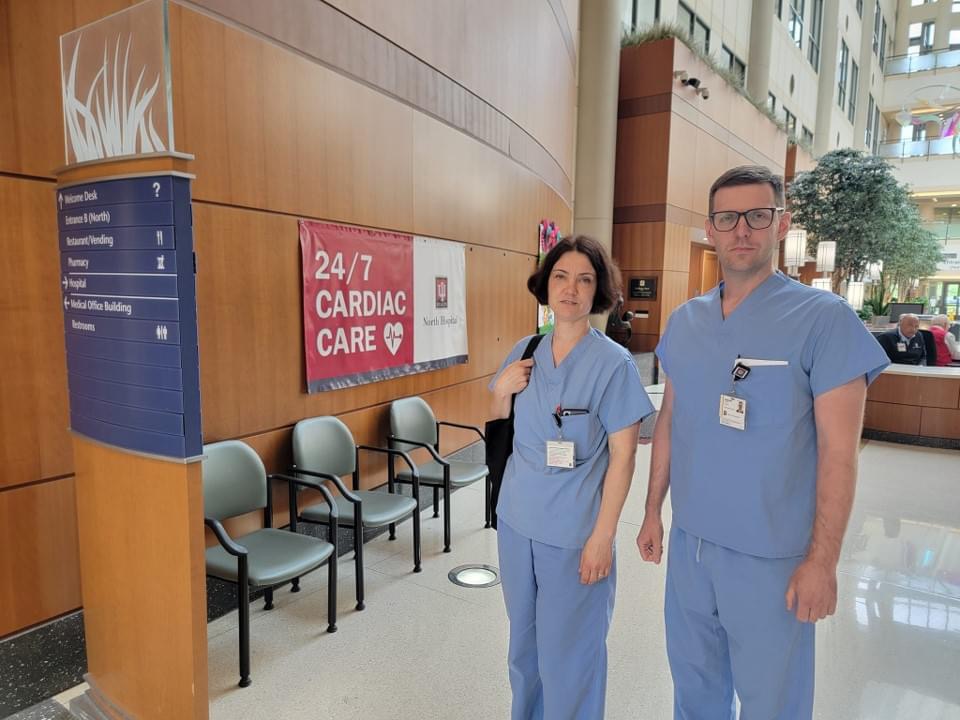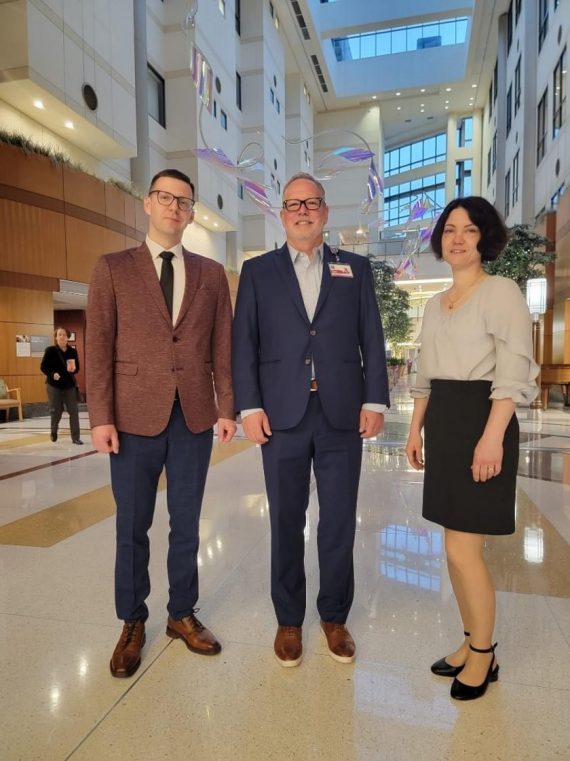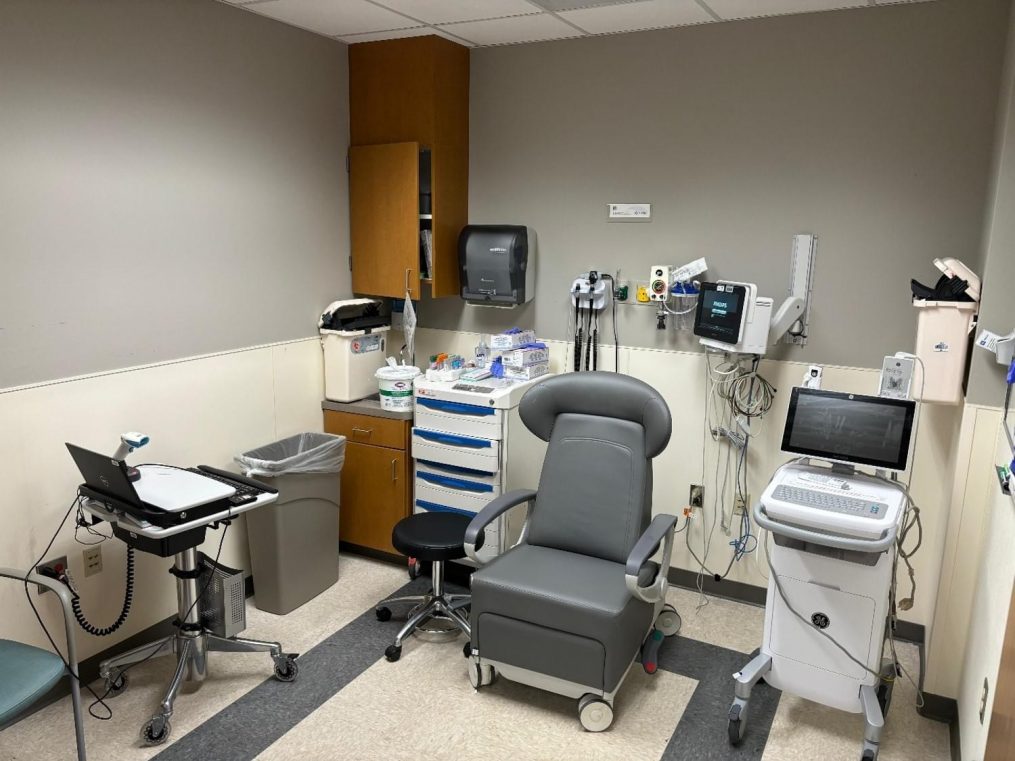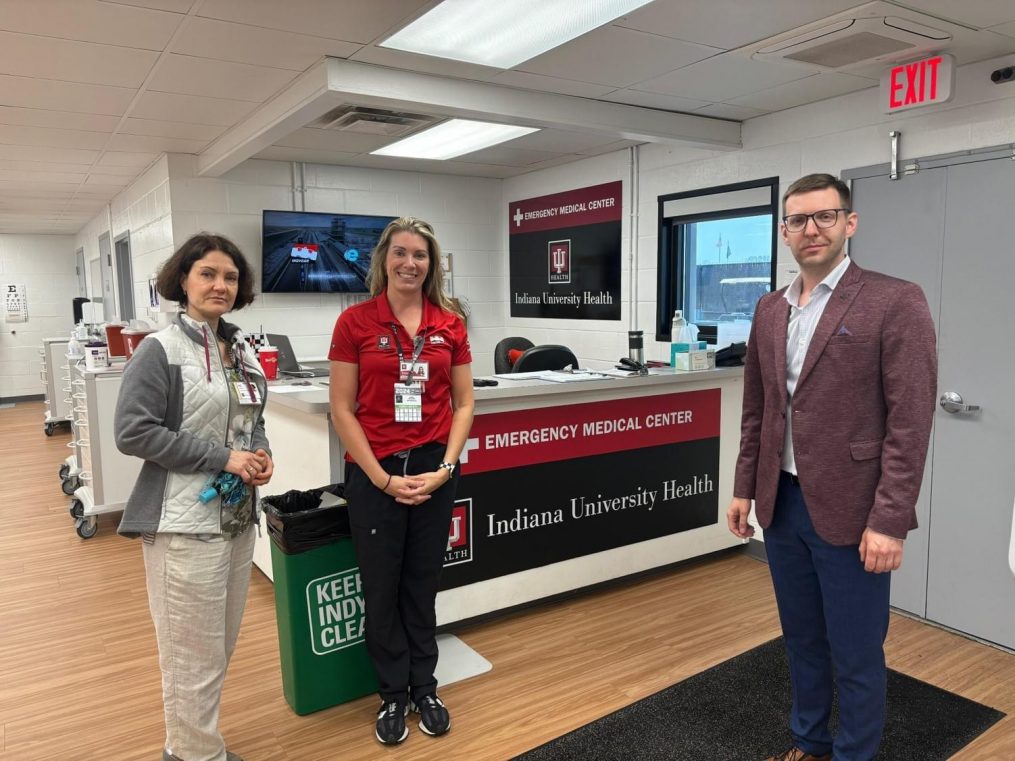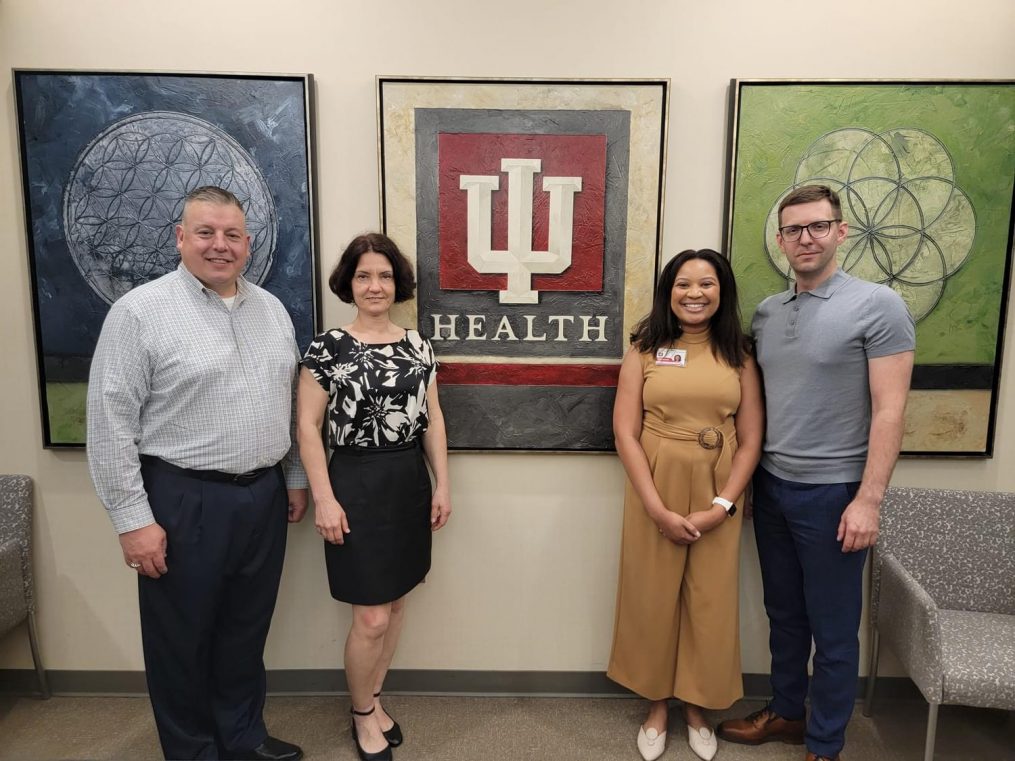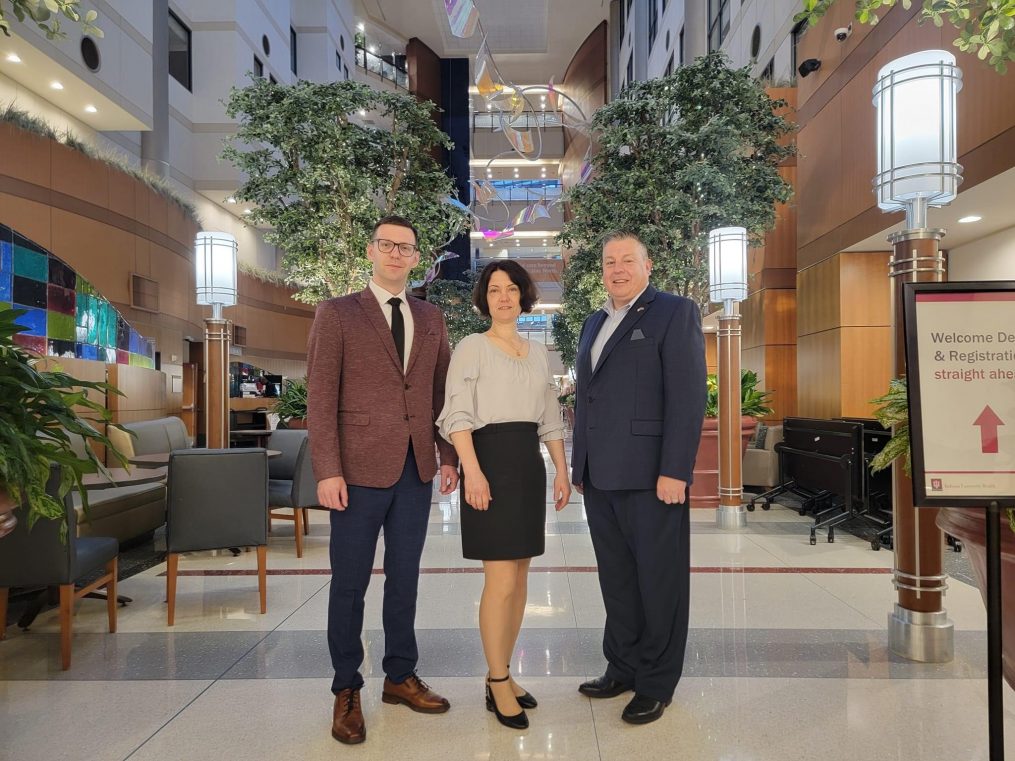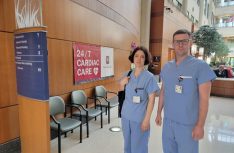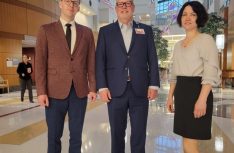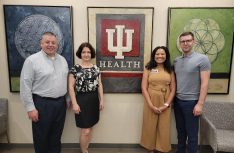News
Staff from Jelgava City Hospital – surgeon Kaspars Vaivods and neonatologist Ilze Punka – have returned from an exchange trip to Jelgava’s sister city, Carmel (IN, USA), where they spent two weeks visiting one of the 16 hospitals in the Indiana University Health network in the state of Indiana, gaining medical experience and getting acquainted with the working environment of a multidisciplinary medical institution.
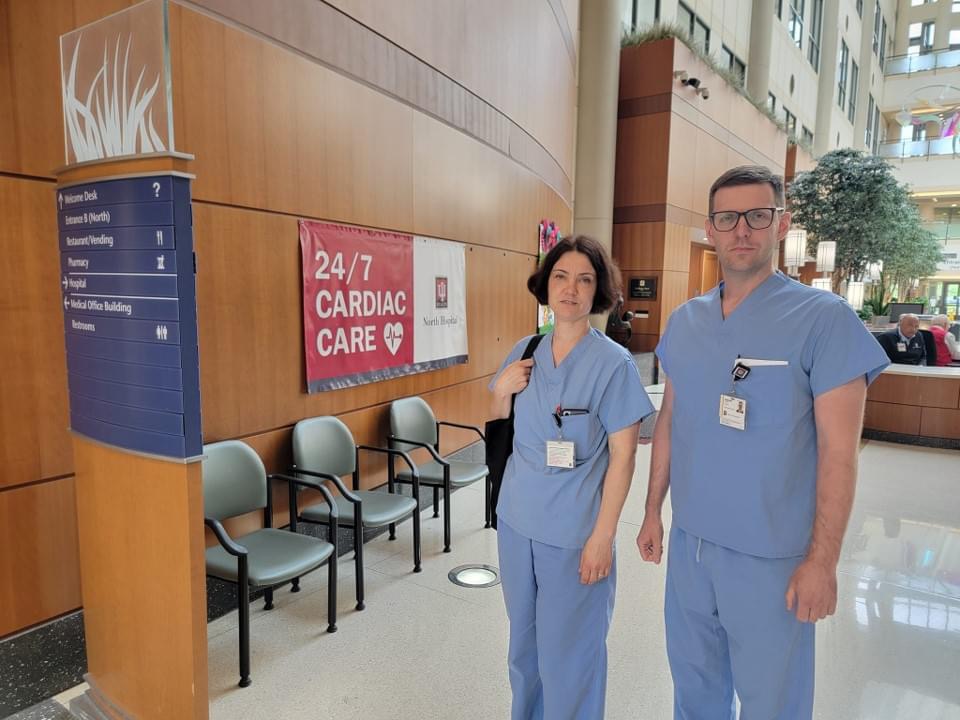
Indiana University Health is the largest healthcare system in the state of Indiana – it comprises 16 hospitals with 2,700 beds, and employs a total of 36,000 staff. During the trip, doctors from Jelgava City visited one of the network’s hospitals, “IU Health North Hospital” in Carmel, which is a full-service hospital providing the highest standards of both inpatient and outpatient care for adults and children. The doctors became acquainted with the hospital’s departments as well as the operation block. They also visited the “Indianapolis Motor Speedway” Emergency Centre, which is a separate hospital serving only the athletes and spectators at the motorsport track. The medical professionals also participated in an “IU Health System” management meeting, where the leadership and the team discussed ways to improve the quality of healthcare in Indiana.
“Medicine in the USA is very advanced – as befits the world’s richest economy, it offers all the current medical technologies and capabilities, which we also observed in the hospital departments. For instance, we had the opportunity to see robotic surgery procedures, a progressive and minimally invasive treatment method that allows for highly complex operations. While one hospital in the state of Indiana has four such robots, there are none in Latvia,” notes K. Vaivods, explaining that the US medical system is funded on different fundamental principles, making it essentially incomparable to the Latvian experience. Namely, US hospitals are private enterprises with the primary goal of making a profit. Every US citizen must think about their private health insurance, and even then, there are significant co-payments. In this system, new hospitals in the USA are built similarly to high-class hotels, which in our local understanding, do not even resemble hospitals. This is so that potential patients feel comfortable and are not initially afraid to visit the institution.
Sharing his thoughts on the approach to structured work, K. Vaivods states: “Time is money, so the hospital’s work is very precisely planned. For example, in almost all operating rooms, surgeries are conducted continuously throughout the day, minimizing the idle time of operating rooms. The problem of specialist shortages in the Emergency Department is addressed by employing emergency physicians capable of solving most patient issues in the department, rather than relying on doctors from specific specialties (such as surgeons, neurologists, and internists), with specialist doctors called only when absolutely necessary. The Emergency Department also has a coordinator who is not a medical professional – this person manages patient flow, controls the use and cleaning of spaces, and ensures that patient care is delivered without unnecessary delays. At the same time, doctors have a lighter workload than in Latvia – US doctors typically work eight to twelve-hour shifts, whereas our doctors work around-the-clock shifts.” The surgeon concludes that although the medical systems in the US and Latvia differ significantly, the experience gained during the trip clearly demonstrated that the latest technologies, structured work organization with clearly defined duties for staff, and a larger workforce with lighter workloads enable even higher quality work.
Sharing her experiences after the trip, neonatologist I. Punka reveals that the treatment methods observed in the US and Latvia are comparable, while the main differences lie in technology, patient care, and education. “The material and technical support in US hospitals is at the highest level, undoubtedly making the treatment process faster and more efficient. For example, in the Maternity Department, strip tests are used that do not need to be sent to the lab and results are ready in just a few minutes. The departments are equipped with diverse equipment, allowing basic examinations to be carried out on-site. Vital signs – blood pressure, pulse, body temperature, and blood oxygen saturation – are monitored around the clock in the departments, which nurses do not have to perform manually,” explains I. Punka. She mentions that the daily work in the hospital is fully digitalized – all records are kept only in the hospital system, without duplicating them on paper, thus easing the daily workload of medical staff. There is also a unified system among the hospitals in the state of Indiana that stores patient data, facilitating doctors’ work when additional information about a patient’s previous examinations is needed. Additionally, each room is equipped with a computer, allowing the doctor or nurse to make records immediately after visiting the patient, rather than returning to their station or office.
“One of the weeks of the trip I spent in the Maternity Department, which is my usual work environment at Jelgava City Hospital. What I observed as a truly valuable benefit is the education of patients and support for new parents. Specifically, upon discharge with their newborn, new parents receive a magazine with information on newborn care, breastfeeding, the emotional state of family members, and many other topics. Additionally, families are given a digital code that provides access to video materials on various topics related to newborn care,” says I. Punka. The neonatologist points out that although treatment methods in the USA and Latvia are comparable, our opportunities to improve institutional work lie in digital solutions, even more powerful material and technical resources, and centralized informational support for patients even after receiving medical services in the hospital.
It should be noted that after the trip, the medical professionals shared their experiences with colleagues and hospital management. “It is clear that the financial capabilities of the two different medical systems are incomparable, but this trip has provided an impetus for improving hospital work organization, patient care, and digitalization. Employee rotation between departments, an internal electronic communication system for doctors to schedule further examinations for patients, and a patient’s relatives identification system for data protection are just a few examples of areas where we can gain valuable experience,” summarizes Kārlis Smilga, a board member of Jelgava City Hospital. In the future, Jelgava City Hospital plans to invite Carmel’s medical professionals for a return visit.
It should be noted that the exchange program is one of the initiatives of the cooperation program between Jelgava and Carmel, developed by Latvia’s Honorary Consul in Indiana and President of Carmel’s Sister City Committee, Andris Bērziņš.
In July, Jelgava’s municipal police officers will go to Carmel, USA, for an exchange trip for the second time, and in August, Carmel Police Department officers have already received an invitation to visit Jelgava.
Carmel is a city in Indiana with more than 100,000 residents. It has become Jelgava’s thirteenth sister city and the first sister city in the USA.
 7.4 °C,
5.3 m/s,
53.1 %
7.4 °C,
5.3 m/s,
53.1 % 
